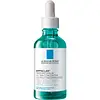What's inside
What's inside
 Key Ingredients
Key Ingredients

 Benefits
Benefits

 Concerns
Concerns

No concerns
 Ingredients Side-by-side
Ingredients Side-by-side

Water
Skin ConditioningButylene Glycol
HumectantMethyl Gluceth-20
HumectantNiacinamide
Smoothing1,2-Hexanediol
Skin ConditioningCaprylic/Capric Triglyceride
MaskingDextrin Palmitate/Ethylhexanoate
EmulsifyingGlycerin
HumectantAllantoin
Skin ConditioningCentella Asiatica Extract
CleansingPrunus Mume Fruit Extract
HumectantCarica Papaya Fruit Extract
Skin ConditioningVitis Vinifera Fruit Extract
Skin ConditioningPyrus Malus Fruit Extract
Skin ConditioningMelia Azadirachta Leaf Extract
Skin ConditioningMelia Azadirachta Flower Extract
Skin ConditioningCoccinia Indica Fruit Extract
Skin ConditioningAmber Powder
Solanum Melongena Fruit Extract
Skin ConditioningOcimum Sanctum Leaf Extract
Skin ConditioningCurcuma Longa Root Extract
MaskingCorallina Officinalis Extract
Skin ConditioningMoringa Oleifera Seed Oil
EmollientCarbomer
Emulsion StabilisingXanthan Gum
EmulsifyingTromethamine
BufferingArginine
MaskingAdenosine
Skin ConditioningHydroxyethylcellulose
Emulsion StabilisingDisodium EDTA
Water, Butylene Glycol, Methyl Gluceth-20, Niacinamide, 1,2-Hexanediol, Caprylic/Capric Triglyceride, Dextrin Palmitate/Ethylhexanoate, Glycerin, Allantoin, Centella Asiatica Extract, Prunus Mume Fruit Extract, Carica Papaya Fruit Extract, Vitis Vinifera Fruit Extract, Pyrus Malus Fruit Extract, Melia Azadirachta Leaf Extract, Melia Azadirachta Flower Extract, Coccinia Indica Fruit Extract, Amber Powder, Solanum Melongena Fruit Extract, Ocimum Sanctum Leaf Extract, Curcuma Longa Root Extract, Corallina Officinalis Extract, Moringa Oleifera Seed Oil, Carbomer, Xanthan Gum, Tromethamine, Arginine, Adenosine, Hydroxyethylcellulose, Disodium EDTA
Water
Skin ConditioningAlcohol Denat.
AntimicrobialPropanediol
SolventGlycolic Acid
BufferingNiacinamide
SmoothingDimethyl Isosorbide
SolventPentylene Glycol
Skin ConditioningSalicylic Acid
MaskingSodium Hydroxide
BufferingPEG-60 Hydrogenated Castor Oil
EmulsifyingHydroxyethylpiperazine Ethane Sulfonic Acid
BufferingCitric Acid
BufferingPEG-30 Glyceryl Cocoate
EmulsifyingCapryloyl Salicylic Acid
ExfoliatingBiosaccharide Gum-1
HumectantMaltodextrin
AbsorbentPhytic Acid
Polyquaternium-10
Parfum
MaskingWater, Alcohol Denat., Propanediol, Glycolic Acid, Niacinamide, Dimethyl Isosorbide, Pentylene Glycol, Salicylic Acid, Sodium Hydroxide, PEG-60 Hydrogenated Castor Oil, Hydroxyethylpiperazine Ethane Sulfonic Acid, Citric Acid, PEG-30 Glyceryl Cocoate, Capryloyl Salicylic Acid, Biosaccharide Gum-1, Maltodextrin, Phytic Acid, Polyquaternium-10, Parfum
 Reviews
Reviews

Ingredients Explained
These ingredients are found in both products.
Ingredients higher up in an ingredient list are typically present in a larger amount.
Niacinamide is a multitasking form of vitamin B3 that strengthens the skin barrier, reduces pores and dark spots, regulates oil, and improves signs of aging.
And the best part? It's gentle and well-tolerated by most skin types, including sensitive and reactive skin.
You might have heard of "niacin flush", or the reddening of skin that causes itchiness. Niacinamide has not been found to cause this.
In very rare cases, some individuals may not be able to tolerate niacinamide at all or experience an allergic reaction to it.
If you are experiencing flaking, irritation, and dryness with this ingredient, be sure to double check all your products as this ingredient can be found in all categories of skincare.
When incorporating niacinamide into your routine, look out for concentration amounts. Typically, 5% niacinamide provides benefits such as fading dark spots. However, if you have sensitive skin, it is better to begin with a smaller concentration.
When you apply niacinamide to your skin, your body converts it into nicotinamide adenine dinucleotide (NAD). NAD is an essential coenzyme that is already found in your cells as "fuel" and powers countless biological processes.
In your skin, NAD helps repair cell damage, produce new healthy cells, support collagen production, strengthen the skin barrier, and fight environmental stressors (like UV and pollution).
Our natural NAD levels start to decline with age, leading to slower skin repair, visible aging, and a weaker skin barrier. By providing your skin niacinamide, you're recharging your skin's NAD levels. This leads to stronger, healthier, and younger looking skin.
Another name for vitamin B3 is nicotinamide. This vitamin is water-soluble and our bodies don't store it. We obtain Vitamin B3 from either food or skincare. Meat, fish, wheat, yeast, and leafy greens contain vitamin B3.
The type of niacinamide used in skincare is synthetically created.
Learn more about NiacinamideWater. It's the most common cosmetic ingredient of all. You'll usually see it at the top of ingredient lists, meaning that it makes up the largest part of the product.
So why is it so popular? Water most often acts as a solvent - this means that it helps dissolve other ingredients into the formulation.
You'll also recognize water as that liquid we all need to stay alive. If you see this, drink a glass of water. Stay hydrated!
Learn more about Water